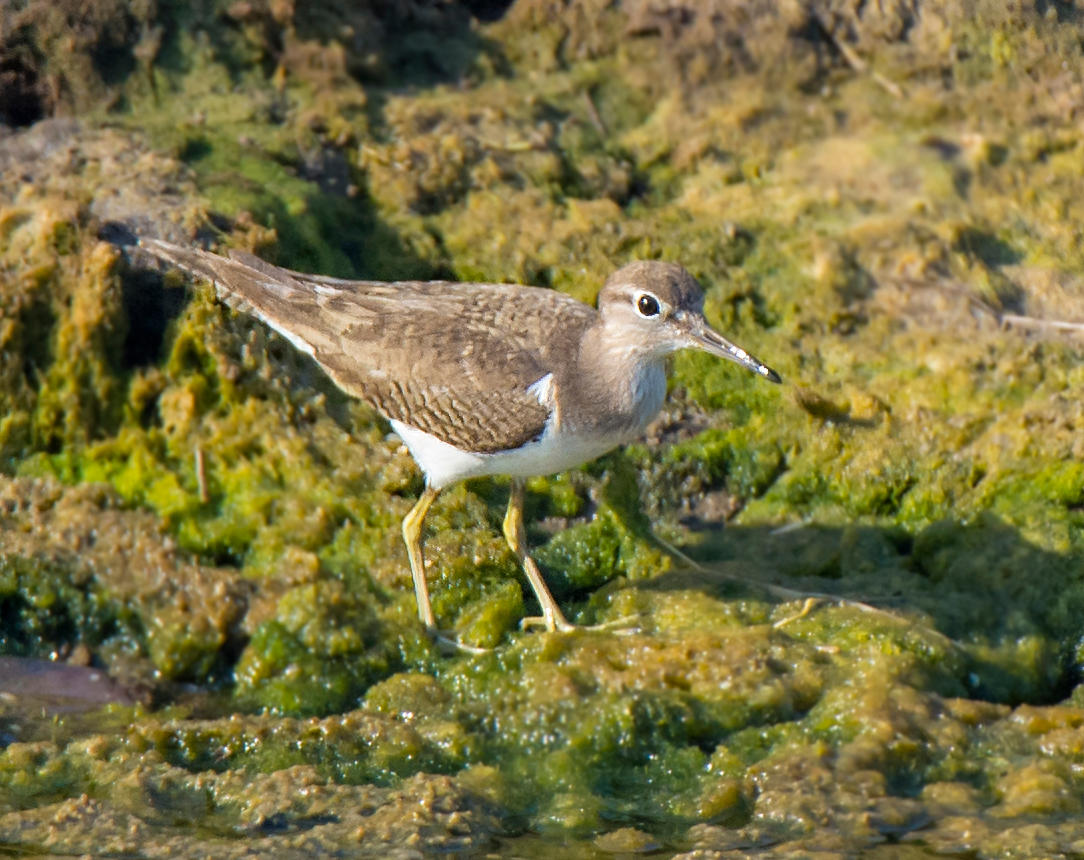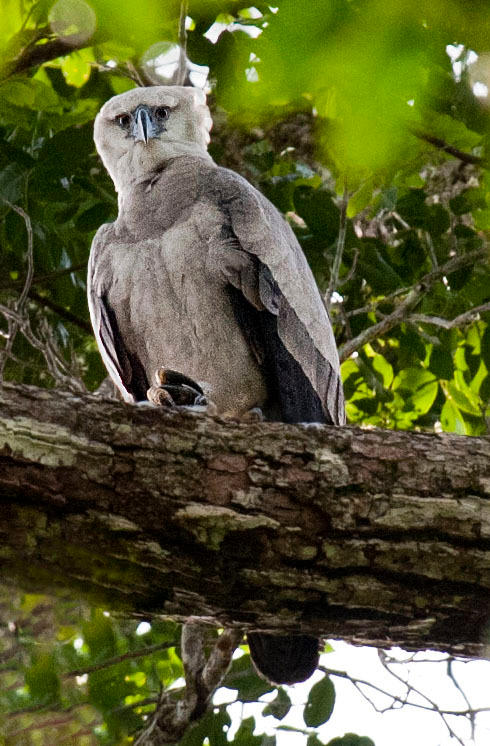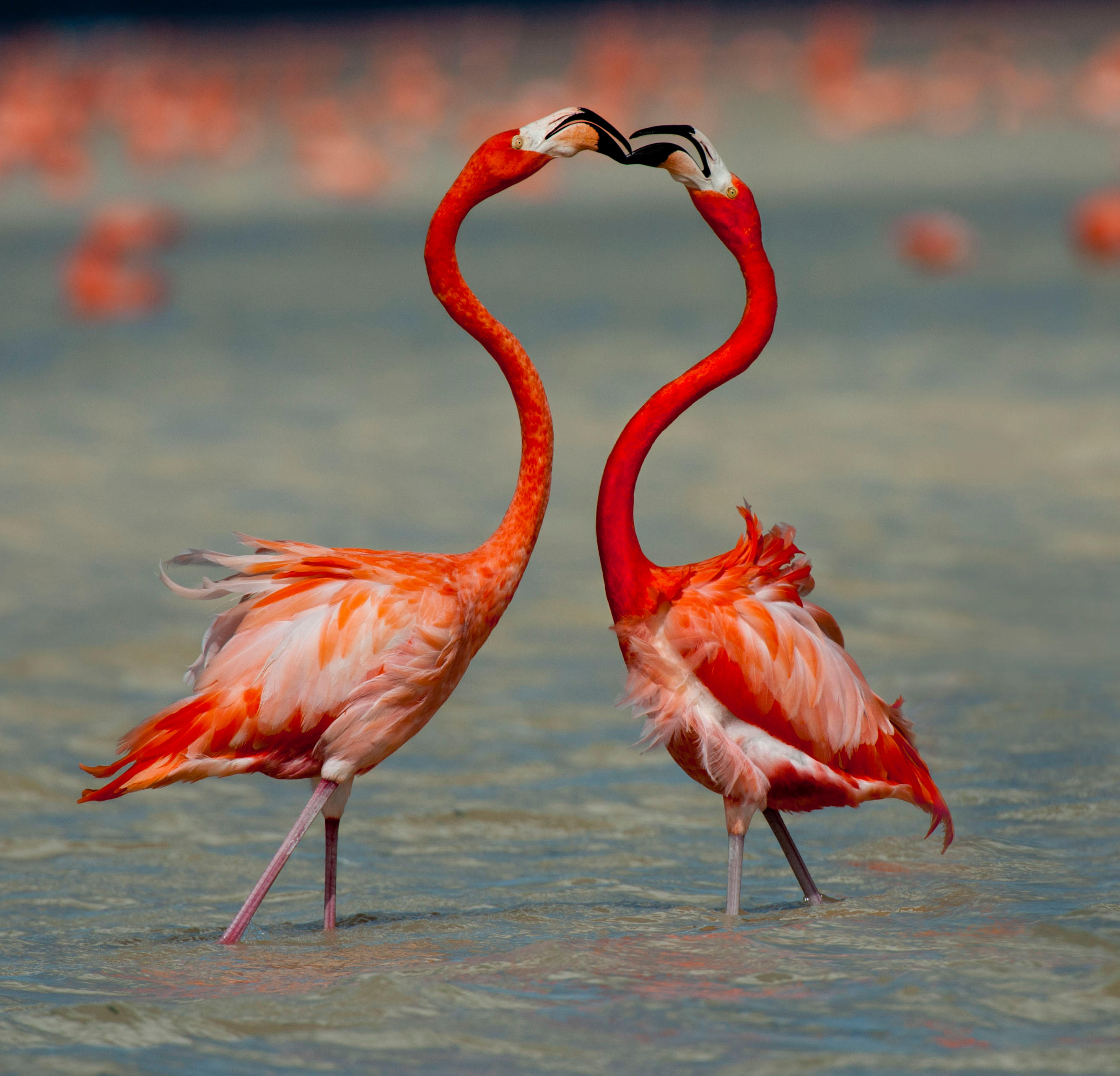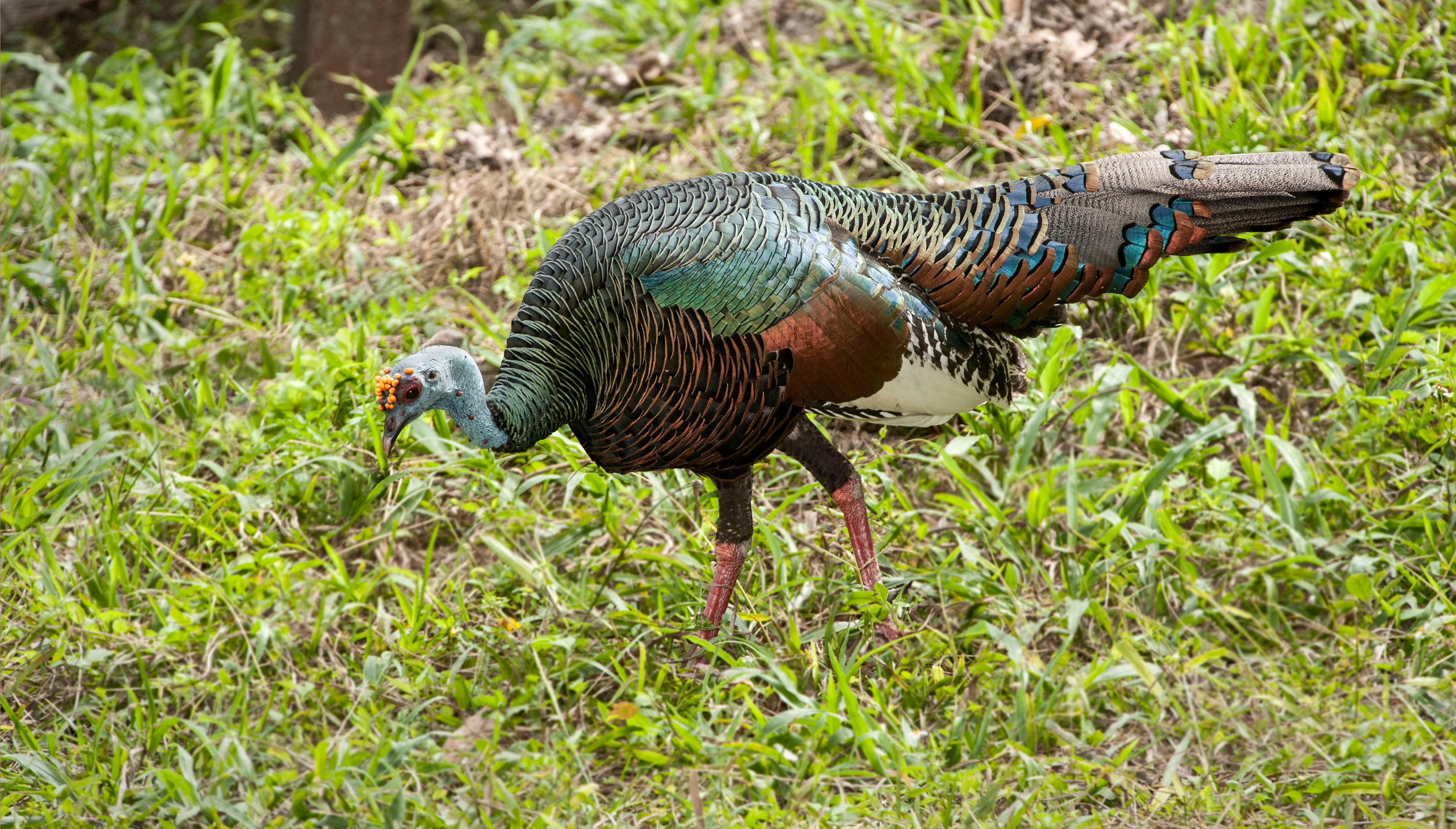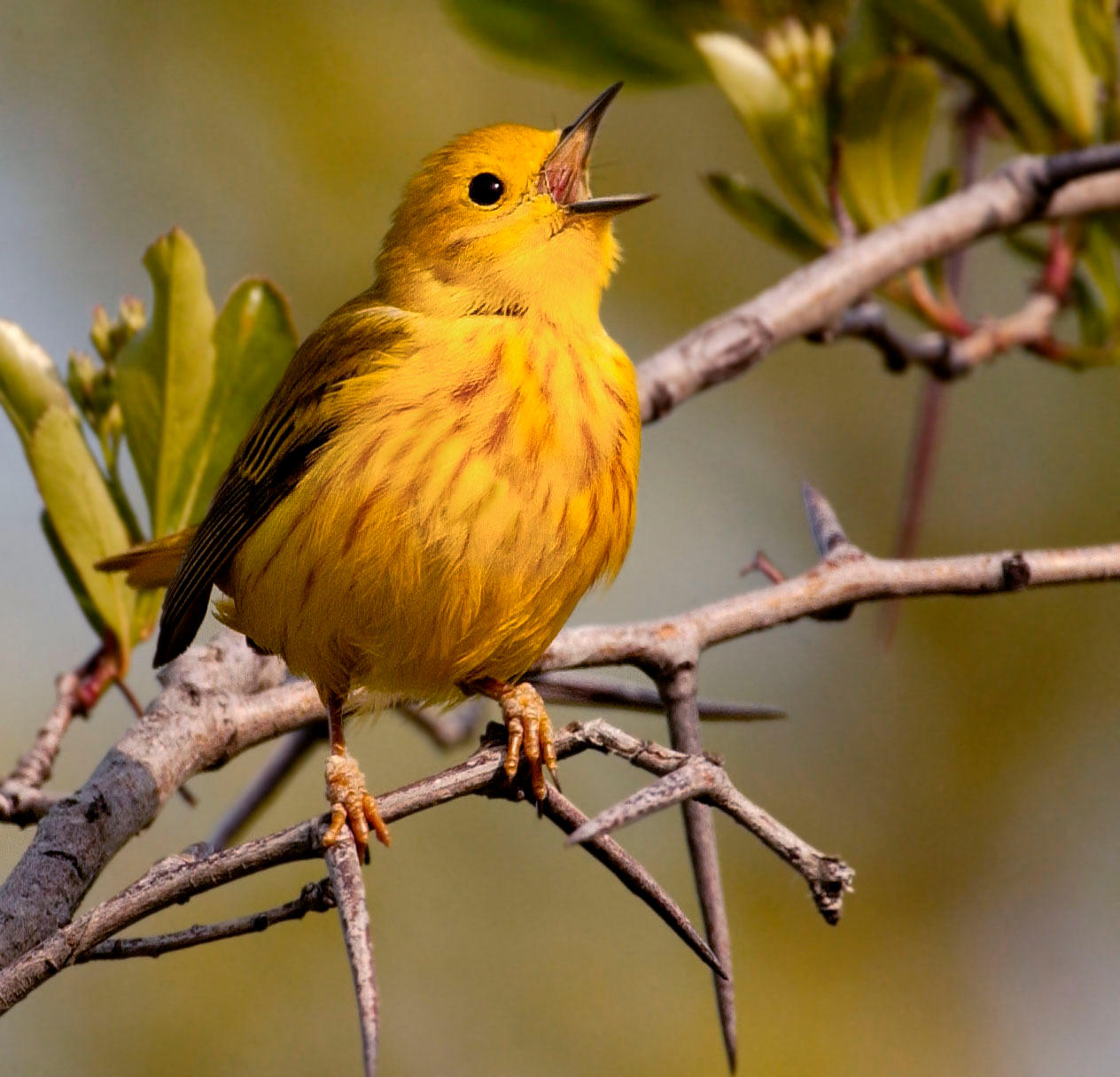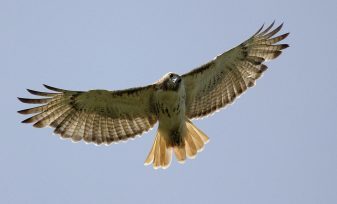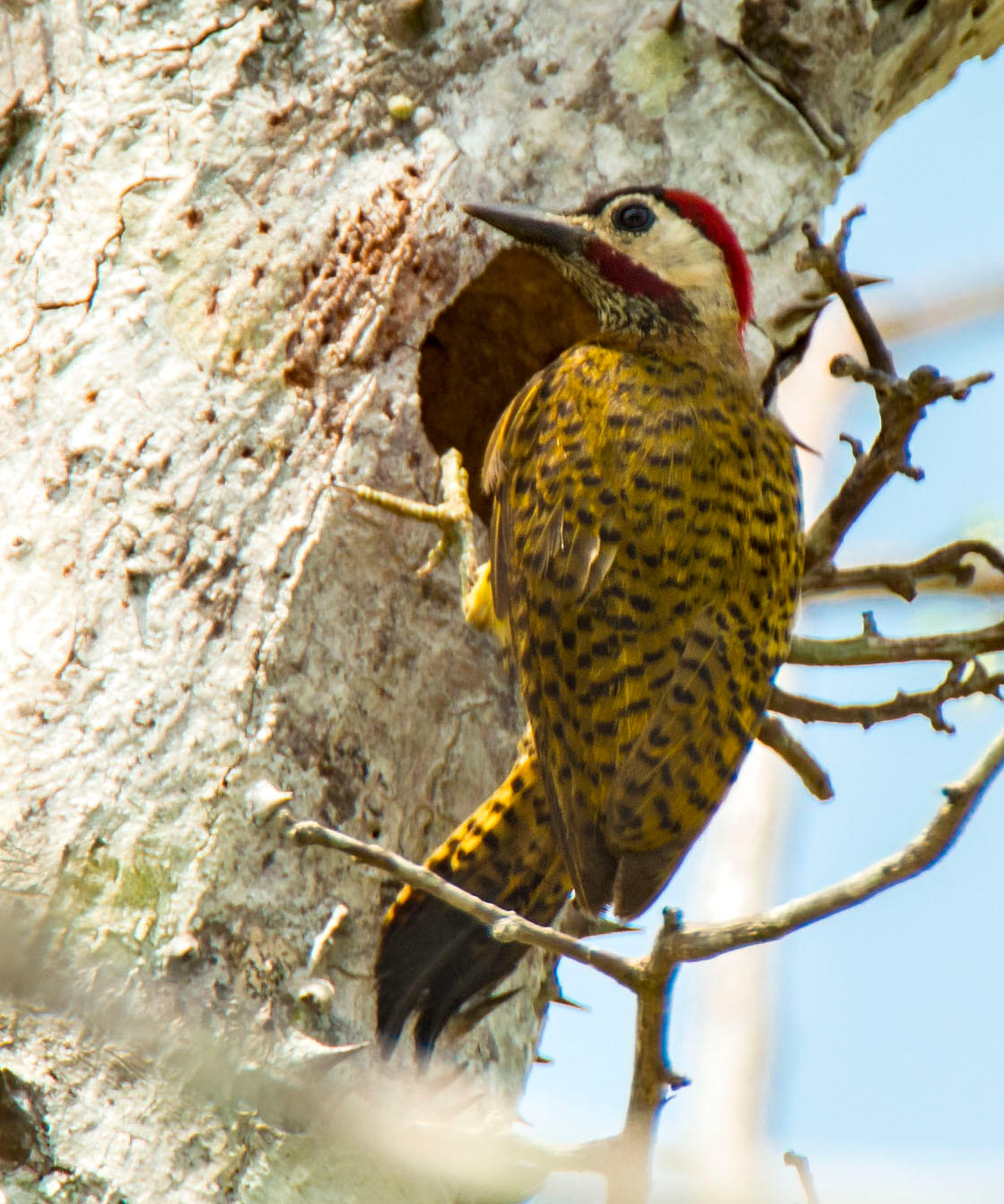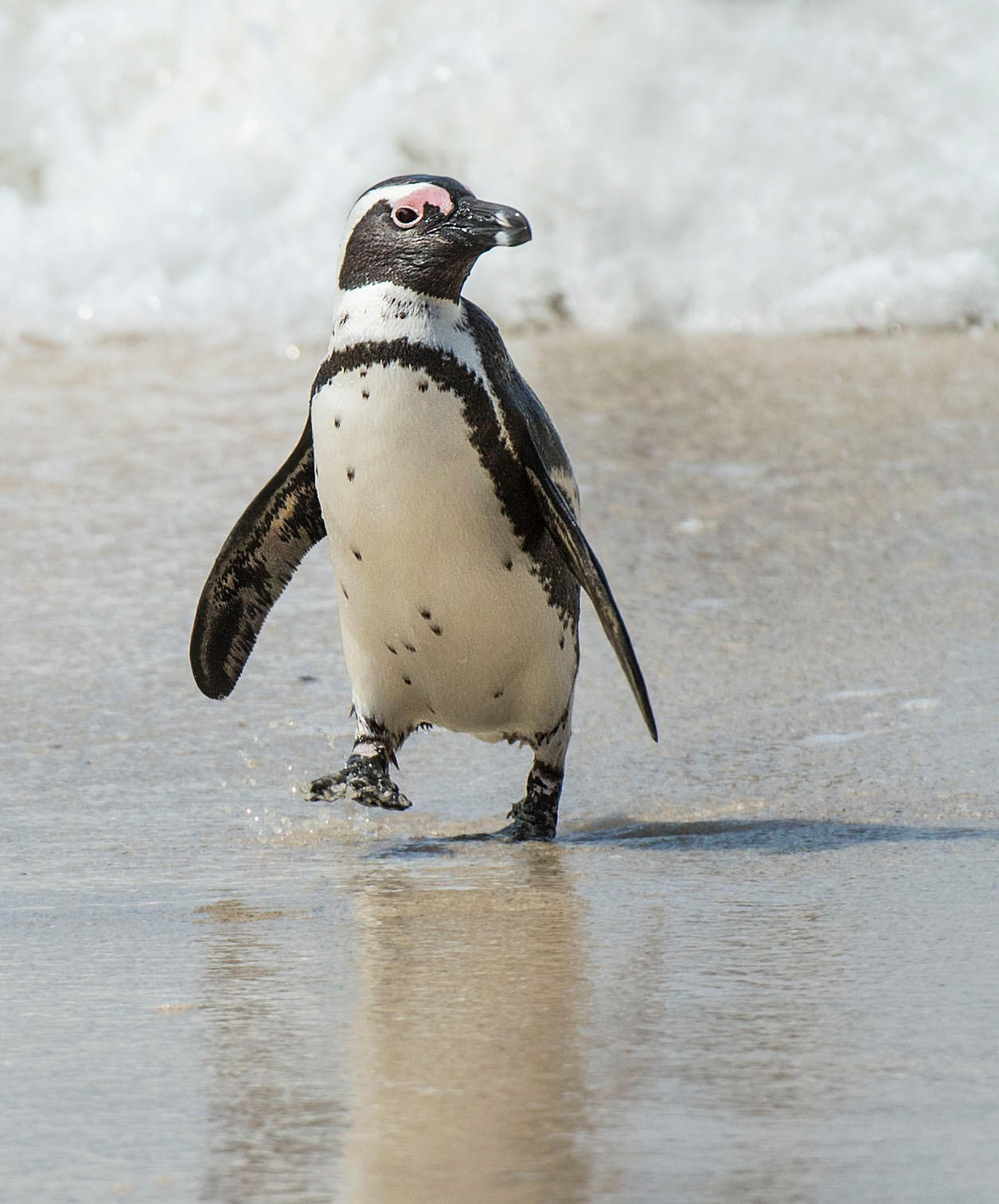The Great Crested Flycatcher is boisterous and is more easily heard than seen. It has 3 distinctive calls: One for moments of stress or excitement during interactions between neighbors, a call to communicate between mates, parents, and young birds to signal predators, and another call which is meant to be heard by a mate at a short distance that indicates low disturbance, typically before dawn. I photographed this passerine at the Indiana Dunes National Park.
View and listen to more Great Crested Flycatchers here: https://owendeutsch.org/GreatCrestedFlycatcher
Welcome to Redlist Friday! Every Friday, I will feature a bird on the IUCN (International Union for Conservation of Nature) Redlist that I’ve photographed. The Redlist is compiled of creatures who are near threatened, vulnerable, endangered, or critically endangered.
This week’s featured bird is the Black-fronted Wood Quail. This bird is listed as vulnerable. It is threatened habitat loss. It is in the family Odontophoridae, which are new world quails. These birds have short but powerful legs. I photographed this one in Colombia.
See more vulnerable birds here: https://owendeutsch.org/vulnerable
Both male and female Fork-tailed Flycatchers have long tails, though the male has a significantly longer forked tail. It measures between 15-16 inches in length, about 4 inches longer than of its counterpart. I photographed this one at the Cockscomb Basin Wildlife Sanctuary in Belize.
View more Fork-tailed Flycatchers here: https://owendeutsch.org/forktailedflycatcher
Welcome to Reserve Wednesday! I am pleased to reveal to you my new Birding Sites and Lodges section on my website. From now on, you'll be seeing a much greater variation in bird sanctuaries and reserves on these weekly posts.
Many birds make their home in protected wildlife reserves. These reserves can be found all around the world – and they work to protect some of the most endangered birds in these areas.
This week's bird is the Canada Goose. Pictured here are a few goslings. It is native to areas of North America. It is sadly considered a pest due to its aggressive nature, noise, and destruction of crops.
I photographed this one at North Pond Nature Sanctuary in Chicago, Illinois.
This sanctuary is located near lake Michigan and covers 15 acres. It has over 150 plant species and attracts 220 plus bird species.
Learn more about this nature sanctuary and see more birds here: https://owendeutsch.org/NorthPond
The Common Yellowthroat is an abundant breeder in North America that inhabits marshes and other wet areas with low dense vegetation. The northern race is a nocturnal migrant that generally migrates at night. Though, some populations are non-migratory. I photographed this one at Indiana Dunes National Park.
Learn more about the Indiana Dunes National Park here: https://owendeutsch.org/CommonYellowthroat
Migration is one of the most interesting things about bird behavior. No two bird species have the same migration patterns, and they come and go from all corners of the earth. I am pleased to have an informative essay on the topic on my blog from Bringing Back the Birds, by Kim and Kenn Kaufman - wildlife artist, titled “Migration: the Thread that Connects the Americas.”
Read it here: http://owendeutsch.org/MIgrationTheThreadThatConnects
The Tropical Mockingbird will often imitate the songs of other nearby Tropical Mockingbirds. They aggressively defend their territories against predators. I photographed this one at Crooked Tree Wildlife Sanctuary in Belize.
See all my mockingbirds here: https://owendeutsch.org/mockingbirds
The Tennessee Warbler eats a lot of insects, and its diet is often 90% caterpillars in the summer when this bird is young. I photographed this one at Magic Hedge in Chicago, Illinois.
See more of this bird here: https://owendeutsch.org/TNWarbler
The Von der Decken's Hornbill makes a nest that only has one small hole big enough for the male to drop food down to the female and the chicks. Once the mother and chicks become too big for the nest, the mother breaks the best open and rebuilds it. The male has a red bill, and the female has a black bill. I photographed this one at Meru National Park in Kenya with my friend and guide Nelis Wolmarans - Wildlife and Photographic Safaris.
See more hornbills here: https://owendeutsch.org/hornbills
The Superb Starling has several calls, and at midday, its call is softer with repeated phrases. I photographed this one in Kenya with my friend and guide Nelis Wolmarans - Wildlife and Photographic Safaris.
You can hear this bird's call here: https://owendeutsch.org/superbstarling
Welcome to Redlist Friday! Every Friday, I will feature a bird on the IUCN (International Union for Conservation of Nature) Redlist that I’ve photographed. The Redlist is compiled of creatures who are near threatened, vulnerable, endangered, or critically endangered.
This week’s featured bird is the Fernandina's Flicker. This bird is listed as vulnerable. It has been slowly declining in population due to human activity. They share their nesting trees with other birds that nest in tree cavities. This bird is endemic to Cuba, where I photographed it with my friend and guide Forrest Rowland of Rockjumper - Worldwide Birding Adventures.
See more vulnerable birds here: https://owendeutsch.org/vulnerable
#SweetestDay is coming up! The first Sweetest Day ever was October 10th, 1921. It's a great day to share romantic sentiments and expressions, as well as acts of kindness and charity. If you're wanting to get someone sweet in your life a gift, Bringing Back the Birds makes a great gift for any animal, nature or bird lover in your life.
Order on Amazon here: http://owendeutsch.org/SweetestDay2020
To celebrate Sweetest Day, here are two Great Blue Herons engaging in mating behavior! I photographed this pair at the Venice Rookery in Florida.
Welcome to Reserve Wednesday! Recently, I have created a new Birding Sites and Lodges section on my website. In the coming weeks, you'll get to learn about even more bird sanctuaries and reserves.
Many birds make their home in protected wildlife reserves. These reserves can be found all around the world – and they work to protect some of the most endangered birds in these areas.
This week's bird is the Peruvian Racket-tail. This hummingbird is very sexually dimorphic. Aside from colors being different in male and female, the male has the long “racket-tail.”
I photographed this one at Wildsumaco Lodge with my friend and guide Forrest Rowland of Rockjumper - Worldwide Birding Adventures.
This lodge is located on a reserve on a ridge in the Andes’ Eastern Foothills in Ecuador. This area was created by birders, for birders. You can find at least 524 bird species here.
Learn more about this lodge and see more birds here: https://owendeutsch.org/wildsumaco
Visit Crooked Tree featured my Crane Hawk today!
Visit Crooked Tree is in Crooked Tree, Belize, Belize.
October 26 at 8:21 PM · Belize District, Belize ·
The mesmerizing eyes of a Crane Hawk
~~~~~~~~~~~~~~~~~~~~~~~~~~~~~
Crane Hawk
Geranospiza caerulescens
Gavilán Zancón
~~~~~~~~~~~~~~~~~~~~~~~~~~~~~
The Crane Hawk is a bird of prey with an intertarsal joint that allows flexible forward and backward bending of the legs.
—
This diurnal species is found mostly in tropical lowlands like mangrove lagoons and open woodland. It also occurs in swamp forest, and areas with streams and ponds.
—
Status in Belize: Uncommon resident in northern half; scarce in south. Couple records from northern Ambergris Caye.
~~~~~~~~~~~~~~~~~~~~~~~~~~~~~
#birdsofbelize #birdsofcrookedtree #crookedtreewildlifesanctuary #cranehawk #birdsofprey #raptor #bird #belize #vctcranehawk #geranospizacaerulescens #gavilanzancon #owendeutschphotography
📸 @owendeutsch
The Cuban Emerald is always solitary, and even the male is only near the female during actual mating. They do not live in or move together in groups. I photographed this one on the Zapata Peninsula in Cuba.
See more Cuban Emeralds here: http://owendeutsch.org/cubanemeralds
Visit Crooked Tree will be featuring my photographs over on their social media this week! Go Follow them on Instagram and Facebook to see their posts! Today they featured my Laughing Falcon!
Visit Crooked Tree is at Crooked Tree Wildlife Sanctuary.
October 25 at 11:17 PM · Belize District, Belize ·
A specialist snake eater - the Laughing Falcon
~~~~~~~~~~~~~~~~~~~~~~~~~~~
Laughing Falcon
Herpetotheres cachinnans
Halcón Guaco
~~~~~~~~~~~~~~~~~~~~~~~~~~~
The Laughing Falcon is named for its long series of yelps given at dawn and dusk, and a single series of which may last for up to five minutes.
—
Though it is heard more often than it is seen, the Laughing Falcon's plumage is very distinctive with a black face mask and collar contrasting with a buffy white head, neck and underparts and brown back.
—
Status in Belize: Fairly common resident on mainland; uncommon on Ambergris Caye
~~~~~~~~~~~~~~~~~~~~~~~~~~~
Thanks to @owendeutsch for the photo
~~~~~~~~~~~~~~~~~~~~~~~~~~~
#laughingfalcon #birdofbelize #birdsofcrookedtree #crookedtreebelize #birds #belize #halconguaco #herpetotherescachinnans #vctlaughingfalcon
The Canada Goose is extremely skilled at living in areas heavily populated by humans. It can often be found in parks, and is usually considered a pest. But look at this little gosling! It's hard to see this face and think of it as a pest as it approaches adulthood, isn't it? I photographed this one at North Pond Nature Sanctuary in Chicago, Illinois.
See more Canada Geese and goslings here: http://owendeutsch.org/canadageese
The Brown-headed Cowbird parasitizes the nest of over 220 different species of North American birds. This means the cowbird lays its eggs in those birds' nests. I photographed this one at the Indiana Dunes National Park.
See all my cowbirds here: http://owendeutsch.org/cowbird
Welcome to Reserve Wednesday! Recently, I have created a new Birding Sites and Lodges section on my website. In the coming weeks, you'll get to learn about even more bird sanctuaries and reserves.
Many birds make their home in protected wildlife reserves. These reserves can be found all around the world – and they work to protect some of the most endangered birds in these areas.
This week's bird is the Red-fronted Tinkerbird. This bird can repeat its call 100 times per minute.
I photographed this bird at Lemala Kuria Hills lodge of Lemala Camps & Lodges in Tanzania with my friend and guide Nelis Wolmarans - Wildlife and Photographic Safaris.
This lodge is located in Wogakuria Hills of the Northern Serengeti in Tanzania. It is in a family of several other lodges within the Lemala Camps. Many of Africa's most unique and colorful birds can be found here.
Learn more about this park and see more birds here: https://owendeutsch.org/LemalaKuriaHills
On today's blog, I'm sharing a BirdNote story about the Double-crested Cormorant! Learn about their calls here: https://owendeutsch.org/doublecrestedcormorantblog
The Amazilia Hummingbird is known to spend up to 80% of its time resting. It uses the rest of its time to find food and be territorial of its space. I photographed this one at the Jorupe reserve in Ecuador.
See more birds at this reserve here: https://owendeutsch.org/Jorupe
With the holidays approaching, and many of us staying indoors more often, curling up with a book is a great way to pass the time. My book, Bringing Back the Birds, in partnership with American Bird Conservancy, not only holds colorful photographs that can be enjoyed, but it also features engaging essays from award-winning writers. It makes a great gift for the bird and nature lover in your life! Shipping times become longer as the holidays get closer so don't delay in ordering a copy if you've had your eye on it.
Order via Amazon here: https://owendeutsch.org/BBBHoliday2020
Owen Deutsch Photography
February 14, 2019 at 3:00 PM ·
Bringing Back the Birds, with the American Bird Conservancy and published by Braided River, addresses the topics of bird conservation and migration. This book features my work from the last 15 years. Eight fellow bird lovers and ornithologists also share their expertise, insights, and dedication, including Jonathan Franzen, Margaret Atwood, Peter P. Marra from the Smithsonian Migratory Bird Center, Kimberly and Kenn Kaufman of Kaufman Field Guides, John W. Fitzpatrick of the Cornell Lab of Ornithology, and Michael Parr and Clare Nielsen of ABC.
Watch the official trailer for the book out now! Order here: http://owendeutsch.org/amazonorder
The Lesser Violetear is also known as the mountain violet-ear. It belongs to the order Apodiformes, which in Greek means "without feet." Of course, this bird and others in this order have feet, but they are small and weak and these birds do not often walk. I photographed this one at the Gocta Waterfalls in Peru.
See more Lesser Violetears here: http://owendeutsch.org/lesservioletears
The Hispaniolan Woodpecker is different from many other woodpeckers. It is social and uses that to its advantage - it joins a large colony of up to 20 birds to protect a nesting bank or tree. I photographed this one in the Dominican Republic with my friend and guide Forrest Rowland of Rockjumper - Worldwide Birding Adventures.
See more Hispaniolan birds here: https://owendeutsch.org/hispaniolan



